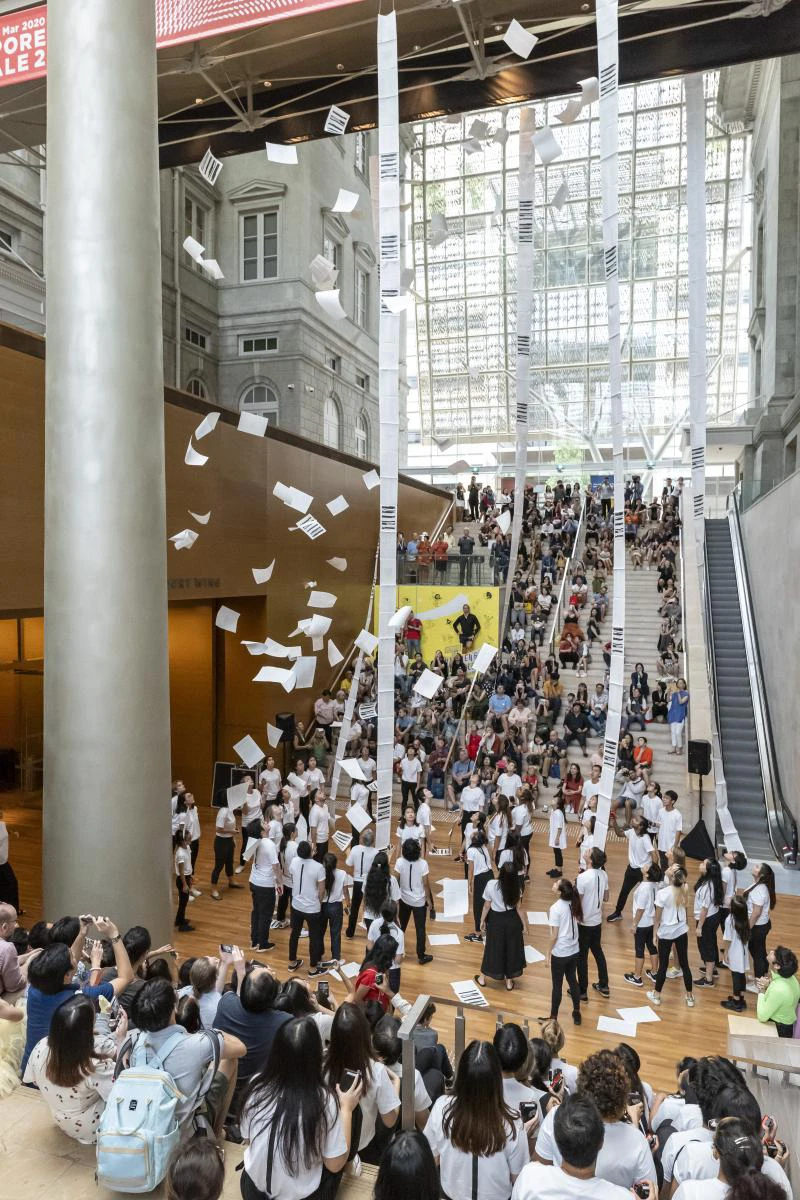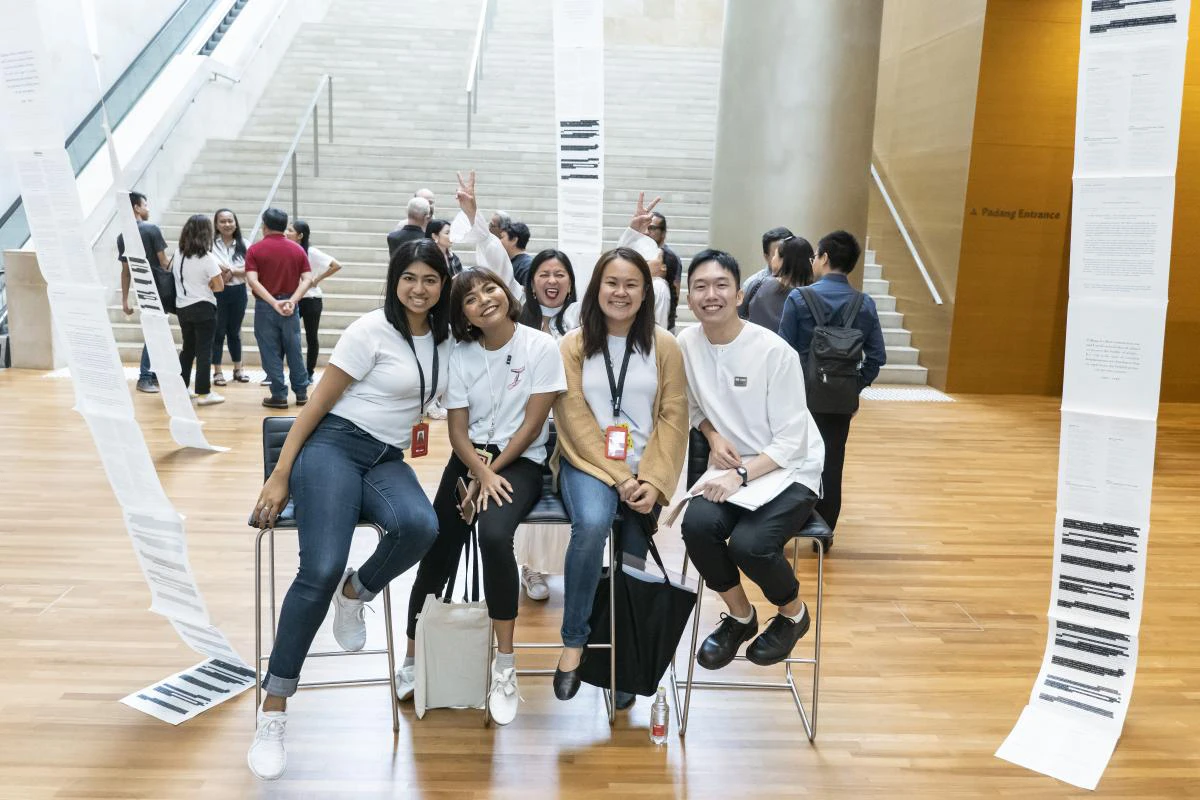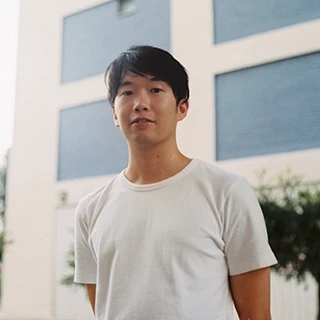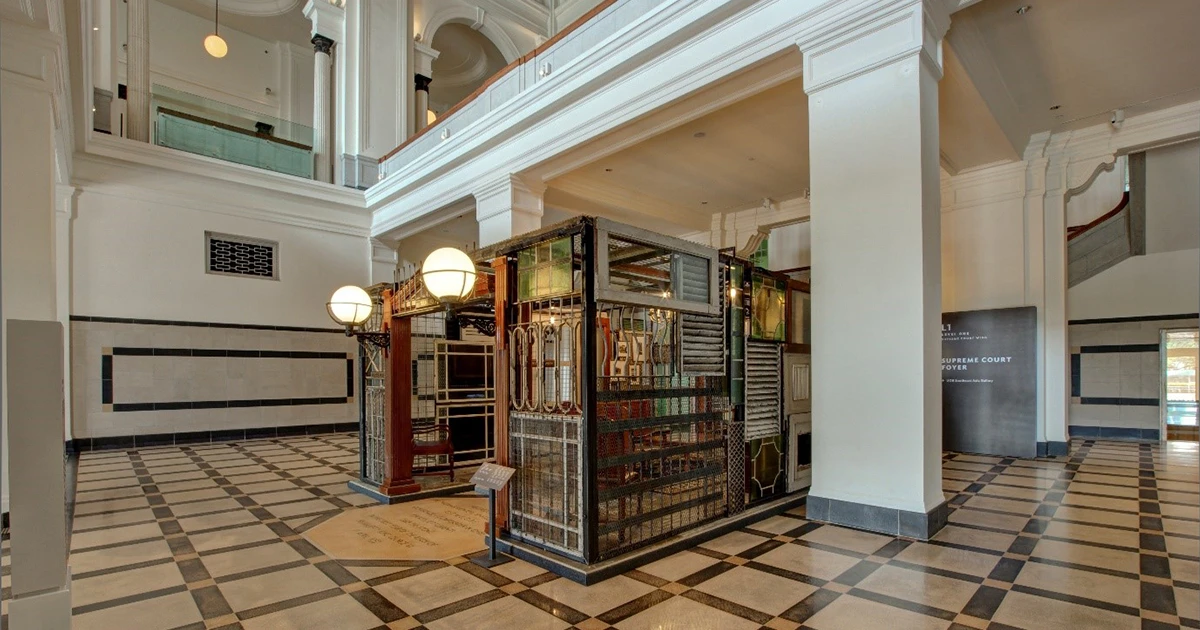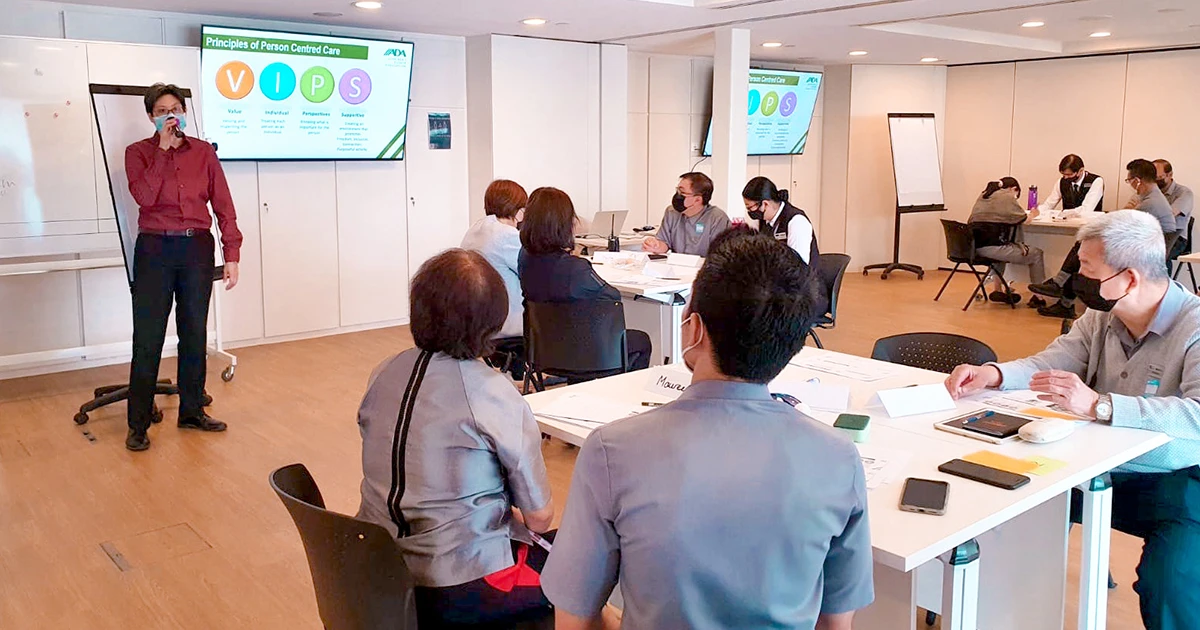Everything to do with paper:
Reflections on Cassettes 100 by Jose Macéda
Paper was a common feature of the 1971 and 2017 iterations of Cassettes 100, both held in the Cultural Centre of the Philippines. Daryl Yam (Assistant Manager, Programmes) writes about how the Programmes team developed this pivotal element of the performance for its re-staging at the Gallery.
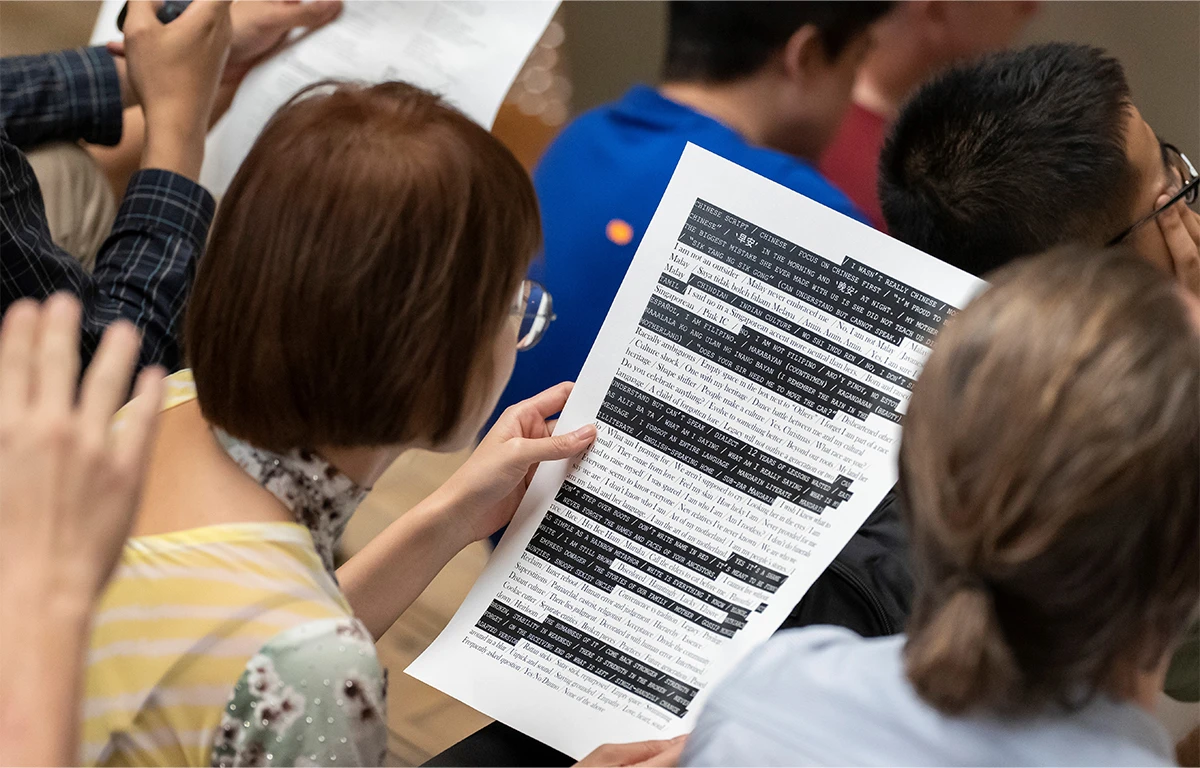
Since the Singapore re-staging of José Maceda’s Cassettes 100 in November 2019, I am reminded of the feat that the Programmes team pulled off whenever I walk past the Padang Atrium: 100 roving participants holding up 100 music players, each playing a specific part in Maceda’s avant-garde score lasting exactly 30 minutes. The sound happening was filmed by Sherman Ong and his assistant Jun, and the resultant video has since been playing on loop on a large TV screen as part of Suddenly Turning Visible: Art and Architecture in Southeast Asia (1969–1989), filling the space with cacophonous sound.
But when I think back to how we re-staged Cassettes 100, it’s the quiet moments that I cherish the most. And those had everything to do with paper.
Paper was a common feature of the 1971 and 2017 iterations of Cassettes 100 within the Cultural Center of the Philippines: the former had reams of toilet paper strewn about the lobby, while the latter had newspaper sheets chronicling the developments of Duterte’s Philippines Drug War. We therefore decided that paper would be central to Cassettes 100’s Singapore re-staging: individual sheets would be tossed from the Link Bridge on level 3, right above the Padang Atrium, marking its beginning and end. Five scrolls of paper, hung and unrolled from the railings of the link bridge, would signify 5-minute intervals, shaping the blocking and movement of the 100 participants over the duration of the happening.
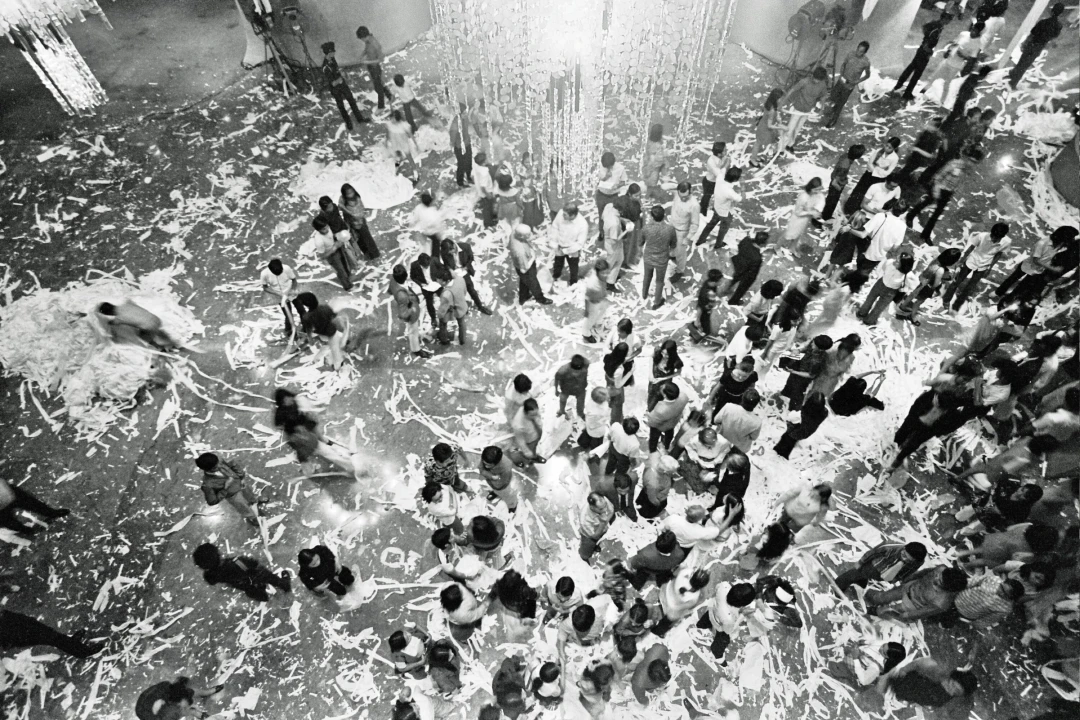
Each piece of paper would further bear a piece of writing collected from our participants. The writings, ranging from diaristic entries to more literary forms (such as the poem and the play), detailed their thoughts on history, the mundanity of urban life, their encounters with race and, for some, their memories of the Philippines. These pages would ultimately amass into a testament to collective human experience.
We knew making these scrolls would prove a challenge. My colleagues Diana, Sin Hui and I made a prototype of these three-storey-long paper scrolls using A3-sized sheets of art paper. We stapled the edges together and threaded the uppermost corners with yarn, allowing us to tie the scrolls to the railings. Though time-consuming, we relished the use of our hands, and were eager to see how it’d work.
Our first prototype failed. It was too weak to hold its own weight, causing it to snap when we unrolled it from the Link Bridge. In our second prototype, we doubled the number of staples per edge – and it worked. The scroll unfurled seamlessly from the bridge, and better yet, the way it unravelled down towards the Atrium below was beautiful. We experimented with scrolls of varying lengths to see how their appearances differed. When rehearsals finally began, we tossed all five scrolls repeatedly off the rails, synchronising our cues and making sure that we got the order and placement just right.
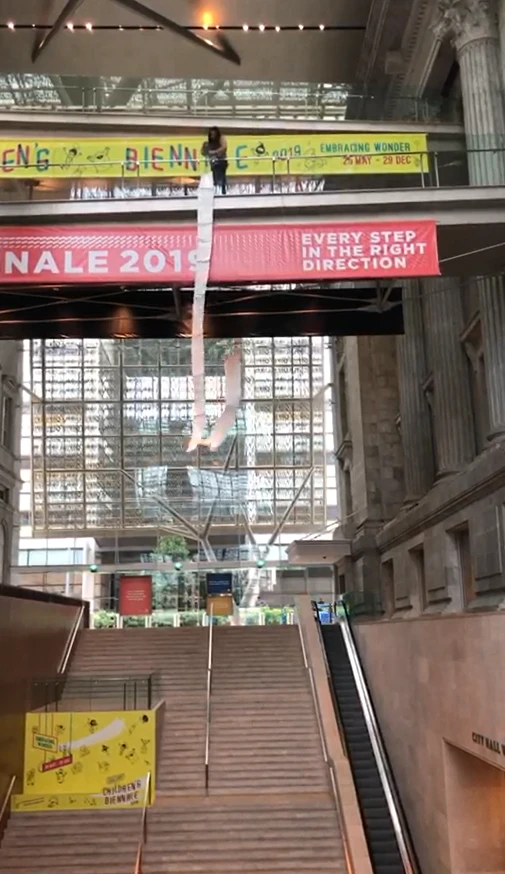  | |
The grand finale would be quite the spectacle: all sound would stop abruptly at the 30-minute mark, and we would throw hundreds of sheets of paper down to the participants in the Atrium. Director Dr Jonas Baes instructed us to practice tossing paper for the finale: it’d need to be scattered, not clumped together, and fall in a gentle, not abrupt, manner. We agreed to do our best.
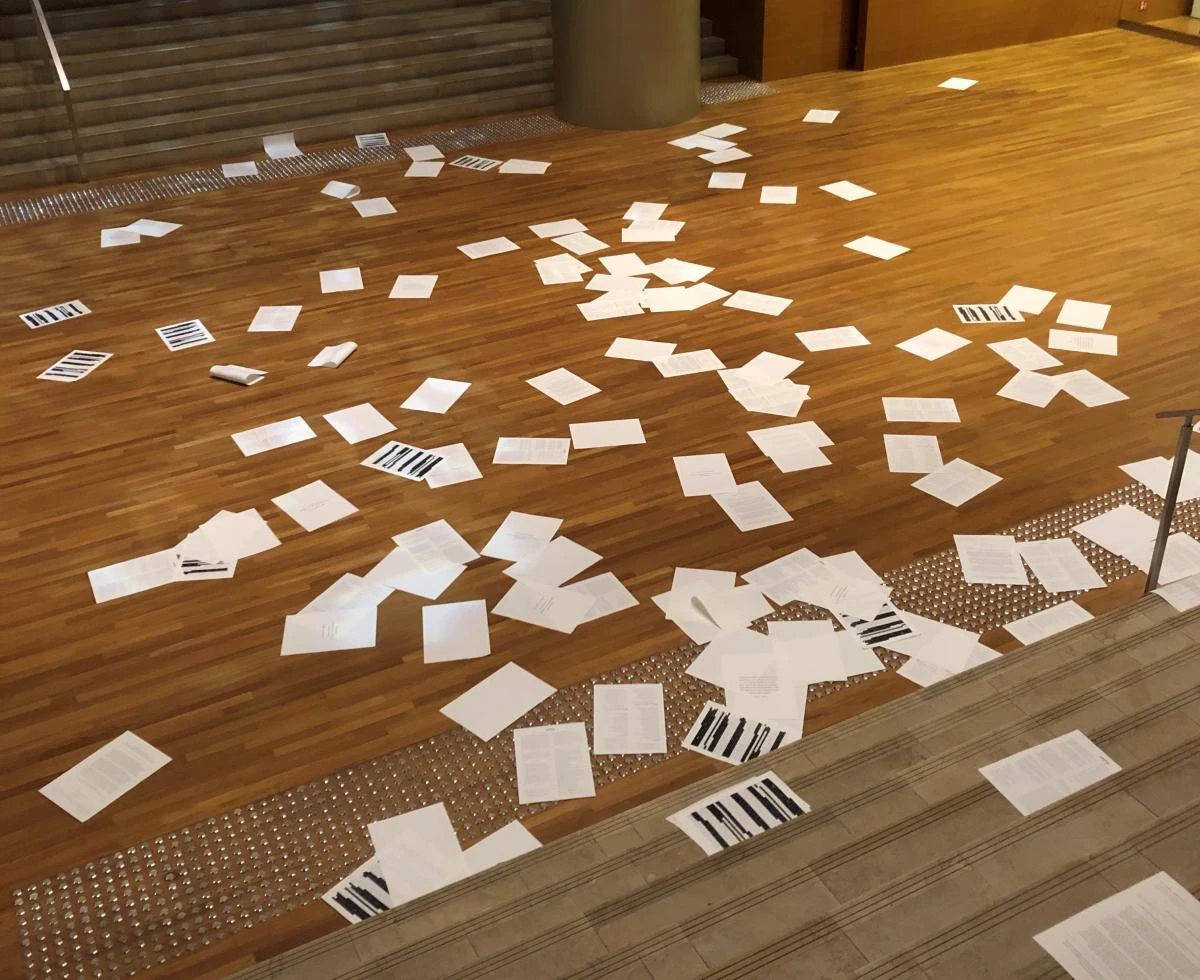
The time was 10.30pm. All 100 participants had already gone back to the holding rooms, where they had grabbed their bags and headed out of the Gallery. Only Diana and I were left in the Padang Atrium, where we only had the company of security guards.
Diana positioned herself at the Link Bridge, while I stayed on level 1, ready to film the process. As Programmers, our job is to plan, procure, organise; hardly do we ever get to play an active part in a performance. Usually, we are the ones standing to side, making sure everything is in order. And so we were nervous, but also eager – determined to get things right.
“I’m ready,” said Diana, standing at the Link Bridge, holding her stack of paper. I told her I was ready too.
I still have that video of Diana walking down the length of the bridge. There’s literally no one else except the two of us. And down the paper falls, like falling leaves. It was probably the most fun either of us had had in a while. And I remember wondering how incredible it would look, really, when our audience arrived in two days’ time.
It looked pretty great.
